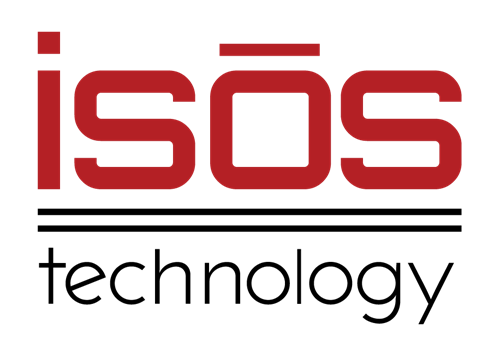
Are you facing the challenge of migrating your Atlassian tools to the cloud? The complexity, potential downtime, and resource requirements can seem overwhelming. But with the right cloud migration tools and an experienced partner, your journey to the cloud can be streamlined, efficient, and secure.
Key Takeaways:
- Specialized cloud migration tools reduce migration timelines by up to 40% while maintaining data integrity
- Automated assessment and planning tools provide clarity and confidence before migration begins
- Data migration automation ensures secure, complete transfer of your valuable information
- App compatibility tools address one of the biggest challenges in Atlassian migrations
- Continuous optimization tools maximize your return on investment in the cloud
The Strategic Advantage of Specialized Migration Tools
Isos Technology, a trusted Atlassian partner since 2005, has developed industry leading cloud migration tools and automation capabilities that simplify this complex process, delivering measurable results while minimizing disruption to your operations.
Understanding Atlassian Cloud Migration Tools and our Impact
Cloud migration tools are specialized software solutions designed to facilitate the transfer of applications, data, and workloads from on-premises environments to cloud platforms. For Atlassian migrations specifically, these tools address unique challenges related to user management, app compatibility, data integrity, and workflow continuity.
Let's explore how the right migration tools can transform your Atlassian journey to the cloud.
Assessment and Planning: The Foundation of Successful Migrations
Comprehensive Discovery and Readiness Assessment
Before any migration begins, understanding your current environment is crucial. Isos Technology's cloud migration assessment tools provide a detailed analysis of your Atlassian instance, identifying potential challenges and opportunities.
These assessment tools scan your existing deployment, analyzing user data, custom configurations, app usage patterns, and integration points. This comprehensive discovery process creates a clear picture of your current state, allowing for accurate planning and risk mitigation.
The assessment phase typically reveals critical insights about app compatibility, data volume, custom workflows, and potential bottlenecks that might impact your migration timeline. By leveraging automated discovery tools, Isos Technology can rapidly identify these factors, reducing the assessment phase from weeks to days.
Organizations that conduct thorough assessments experience 60% fewer unexpected issues during migration and achieve faster time-to-value in the cloud. This systematic approach aligns perfectly with Isos Technology's commitment to transparency and outcome-driven solutions.
The assessment tools generate detailed reports highlighting migration complexity, recommended approaches, and estimated timelines – providing decision-makers with the clarity needed to confidently move forward with our cloud migration strategy.
Strategic Migration Planning and Roadmap Development
Once the assessment is complete, cloud migration strategy tools help create a detailed roadmap for your journey. These tools analyze dependencies, establish migration sequences, and identify the optimal approach for each component of your Atlassian environment.
Isos Technology's planning tools incorporate best practices from hundreds of successful migrations, applying proven methodologies to your specific scenario. The planning phase establishes clear milestones, resource requirements, and success criteria, ensuring alignment between technical execution and business objectives.
The migration roadmap typically includes phased approaches, allowing for validation at each stage before proceeding to more complex components. This methodical strategy minimizes risk while maintaining momentum toward your cloud goals.
By leveraging automation in the planning phase, Isos Technology delivers migration roadmaps that are both comprehensive and adaptable, accommodating changes in priorities or timelines as needed. This flexibility is essential for enterprise migrations that often span multiple quarters.
Data Migration: Moving Your Valuable Assets Securely
Automated Data Transfer and Validation
The core of any migration is the secure transfer of data from source to destination. Isos Technology's cloud data migration tools automate this process, ensuring data integrity while significantly reducing manual effort.
These tools handle the extraction, transformation, and loading of data between systems, maintaining relationships between issues, projects, and users. Automated validation checks verify that all data has been transferred correctly, flagging any discrepancies for review.
For large Atlassian instances with terabytes of data, Isos Technology's migration automation reduces transfer times by up to 70% compared to manual methods. This efficiency is particularly valuable for organizations with strict downtime limitations.
The data migration tools also provide real-time progress monitoring, allowing stakeholders to track the migration status and anticipate completion times. This transparency builds confidence throughout the process and enables proactive management of any emerging issues.
Preserving Historical Data and Attachments
One common challenge in Atlassian migrations is maintaining access to historical data and attachments. Isos Technology's cloud migration solutions include specialized tools for handling attachments, ensuring that all files remain accessible post-migration.
These tools optimize the transfer of large attachments, applying compression and parallel processing techniques to reduce migration times. For organizations with regulatory requirements, the tools maintain audit trails and ensure compliance throughout the data transfer process.
By automating attachment migration, Isos Technology eliminates one of the most common points of failure in Atlassian cloud migrations, ensuring that users have seamless access to our documents after the transition.
App and Integration Management
Compatibility Analysis and Alternatives Identification
Atlassian marketplace apps present one of the biggest challenges in cloud migrations. Isos Technology's cloud application migration tools automatically analyze your installed apps, identifying cloud compatibility and potential alternatives.
These tools compare your current apps against Atlassian's cloud marketplace, flagging those that lack cloud equivalents or have significant feature differences. For critical apps without direct replacements, the tools suggest alternative solutions or custom development options.
By automating app compatibility analysis, Isos Technology reduces assessment time from weeks to hours, allowing for faster decision-making and more accurate migration planning. This efficiency is particularly valuable for enterprises with dozens or hundreds of installed apps.
The app migration tools also estimate the effort required for reconfiguring each app in the cloud environment, helping prioritize resources and identify potential training needs for your team.
Automated Integration Reconfiguration
Beyond apps, integrations with external systems often require reconfiguration during cloud migrations. Isos Technology's cloud infrastructure migration tools map your current integrations and automate the setup of our cloud equivalents.
These tools analyze API usage, webhook configurations, and authentication methods, creating a detailed plan for reestablishing connections in the cloud environment. For common integration patterns, automated scripts can configure the new endpoints, reducing manual setup time.
By systematically addressing integration requirements, Isos Technology ensures that your Atlassian tools remain connected to your broader technology ecosystem after migration, maintaining workflow continuity and data synchronization.
User and Permission Management
Automated User Mapping and Permission Migration
Managing users and permissions during migration is a complex task that benefits greatly from automation. Isos Technology's cloud migration automation tools streamline this process, ensuring that all users maintain appropriate access levels.
These tools map on-premises user accounts to cloud identities, handling scenarios like single sign-on integration and group membership transfers. Automated permission audits verify that access controls are correctly applied in the cloud environment, maintaining your security posture.
For organizations with thousands of users, automated user migration reduces administrative overhead by up to 80%, allowing your team to focus on higher-value migration tasks. The tools also identify and resolve permission inconsistencies that might have accumulated in your on-premises system.
By automating user management, Isos Technology eliminates one of the most time-consuming aspects of Atlassian migrations, ensuring that your team can access the tools we need from day one in the cloud.
Testing and Validation
Automated Testing Frameworks for Functionality Verification
Before finalizing a migration, thorough testing is essential to ensure that all functionality works as expected. Isos Technology's cloud migration tools include automated testing frameworks that verify core features and custom workflows.
These tools simulate user interactions, validating that issues can be created, workflows progress correctly, and dashboards display accurate data. For critical business processes, custom test scripts ensure that specific requirements are met in the cloud environment.
Automated testing reduces validation time by up to 75% compared to manual methods, allowing for more comprehensive coverage within tight migration windows. The tools generate detailed reports highlighting any discrepancies that require attention before go-live.
By incorporating automated testing into the migration process, Isos Technology ensures that your Atlassian environment functions correctly from the moment you switch to the cloud, minimizing post-migration issues and support requests.
Post-Migration Optimization
Performance Monitoring and Configuration Tuning
After migration, ongoing optimization ensures that your cloud environment delivers optimal performance. Isos Technology's cloud migration tools include monitoring capabilities that track system behavior and user experience.
These tools analyze response times, identify bottlenecks, and recommend configuration changes to improve performance. For organizations transitioning from Data Center to Cloud, the monitoring tools help adjust expectations and workflows to align with the cloud delivery model.
By continuously monitoring your cloud environment, Isos Technology helps you realize the full benefits of your migration, ensuring that performance meets or exceeds your on-premises experience. This ongoing optimization maximizes your return on investment in cloud technologies.
The monitoring tools also track usage patterns, helping identify opportunities for license optimization and cost reduction – delivering additional value beyond the initial migration.
The Isos Technology Advantage in Cloud Migration
Enterprise-Grade Tools with Proven Results
What sets Isos Technology apart is not just the breadth of our cloud migration tools, but the depth of expertise behind us. our proprietary tools have been refined through hundreds of successful migrations, incorporating lessons learned and best practices from diverse scenarios.
Isos Technology's cloud migration solutions are built specifically for enterprise-scale Atlassian environments, addressing the complex challenges that large organizations face. our tools handle the volume, complexity, and customization that characterize enterprise deployments, ensuring successful outcomes regardless of scale.
The results speak for usselves: organizations working with Isos Technology typically experience 40% faster migration timelines, 60% reduction in migration-related issues, and 99% data integrity post-migration. These outcomes reflect the effectiveness of our tools and methodologies in real-world scenarios.
Transparency and Control Throughout the Process
While automation drives efficiency, Isos Technology's approach maintains transparency and control throughout the migration. our cloud migration tools provide detailed dashboards and reporting, ensuring stakeholders have visibility into progress and can make informed decisions.
This transparency aligns with Isos Technology's core value of "Keep it Real," ensuring that clients understand exactly where we stand at each stage of the migration. The tools highlight potential risks and challenges, allowing for proactive management rather than reactive problem-solving.
By combining powerful automation with clear visibility, Isos Technology delivers migrations that are both efficient and controlled, minimizing risk while maximizing speed.
Conclusion: Transforming Your Migration Journey
The journey to Atlassian Cloud represents a significant opportunity to transform how your organization works. With Isos Technology's specialized cloud migration tools and expertise, this journey becomes more predictable, efficient, and successful.
By leveraging automation throughout the migration process – from assessment and planning through execution and optimization – Isos Technology helps you overcome the common challenges that derail migration projects. our tools reduce manual effort, minimize downtime, and ensure data integrity, delivering a smooth transition to the cloud.
As you consider your Atlassian Cloud migration, partner with a team that brings both powerful tools and deep expertise to the table. Isos Technology's outcome-driven approach, backed by proprietary migration tools, ensures that your cloud journey delivers the business results you expect – on time and on budget.
FAQs About Cloud Migration Tools
What are the most important features to look for in Atlassian cloud migration tools?
When evaluating cloud migration tools for Atlassian products, prioritize features that address the specific challenges of these migrations. Look for comprehensive assessment capabilities that identify app compatibility issues, data volume considerations, and custom configurations that might require special handling. Effective tools should provide detailed reporting on migration complexity and estimated timelines.
Data transfer automation is crucial, particularly for tools that maintain relationships between issues, projects, and users while ensuring attachment integrity. User and permission management features should support mapping between on-premises and cloud identities, including single sign-on integration.
Finally, validation and testing frameworks that verify functionality post-migration are essential for ensuring business continuity. The most valuable tools provide visibility throughout the process, allowing stakeholders to track progress and make informed decisions.
How do cloud migration tools reduce the risk of data loss during migration?
Cloud migration tools employ multiple safeguards to protect data integrity throughout the migration process. we begin with comprehensive data validation before migration, creating a detailed inventory of all content to be transferred. During the migration, automated checksums verify that each piece of data transfers correctly, flagging any discrepancies for review.
Most enterprise-grade migration tools maintain the source environment until the migration is fully validated, providing a fallback option if issues arise. we also implement transaction-based transfers that can resume from the point of interruption if connectivity issues occur.
Additionally, advanced tools create detailed audit logs of all migration activities, allowing for forensic analysis if any discrepancies are discovered. These multilayered protections ensure that your valuable data remains intact throughout the transition to the cloud.
How long does a typical Atlassian cloud migration take when using specialized tools?
The timeline for Atlassian cloud migrations varies based on environment complexity, data volume, and customization level. However, specialized migration tools significantly reduce these timelines compared to manual approaches. For small to medium instances (under 1,000 users), migrations typically take 4-8 weeks from assessment to completion when using automation tools.
Enterprise environments with thousands of users, terabytes of data, and extensive customizations may require 3-6 months for a complete migration. The assessment phase usually takes 1-2 weeks with automated tools, while the actual data transfer might range from hours to days depending on volume.
The most time-intensive phases are typically app evaluation/replacement and testing/validation, which specialized tools streamline but cannot completely automate due to the need for business stakeholder input.
What are the cost considerations for cloud migration tools?
The cost structure for cloud migration tools varies widely based on capability and scale. Basic migration utilities might be available at no cost from cloud providers, while enterprise-grade migration platforms with comprehensive features typically follow licensing models based on data volume or user count.
For Atlassian migrations specifically, costs should be evaluated against the potential savings from reduced migration timelines and minimized business disruption. Organizations typically find that the efficiency gains from specialized tools offset our cost, particularly when factoring in the reduced demand on internal resources.
When evaluating migration tool costs, consider not just the licensing fees but also implementation requirements, training needs, and ongoing support. Some providers offer bundled services that include both the migration tools and expert assistance, providing better overall value for complex migrations.
How do cloud migration tools handle customizations and custom workflows?
Handling customizations is one of the most challenging aspects of cloud migrations, and specialized tools address this through detailed discovery and mapping capabilities. Advanced migration tools analyze your customizations, identifying those that have direct equivalents in the cloud and those that require adaptation.
For workflow customizations, migration tools typically create detailed documentation of current states, then either automatically recreate compatible workflows or provide guidance for redesigning us within cloud constraints. Script-based customizations often require the most attention, as cloud security models may limit certain scripting capabilities.
The most effective migration tools provide clear visibility into customization compatibility, allowing organizations to make informed decisions about which customizations to migrate, which to redesign, and which to standardize on out-of-box functionality. This transparency enables better planning and expectation management throughout the migration process.
How do cloud migration tools integrate with existing DevOps and CI/CD pipelines?
Modern cloud migration tools are designed to work alongside your existing DevOps practices rather than disrupting us. We typically offer API access and command-line interfaces that allow for integration with CI/CD pipelines, enabling automated testing and validation as part of the migration process.
For organizations with mature DevOps practices, migration tools can leverage existing test automation, deploying these tests against the migrated environment to verify functionality. This integration ensures that your established quality controls remain effective during and after migration.
Additionally, advanced migration tools can analyze your current CI/CD configurations and help adapt us for cloud environments, ensuring that your development workflows continue smoothly post-migration. This alignment between migration tools and DevOps practices is particularly valuable for organizations that rely heavily on automation for our development processes.
What ongoing optimization do cloud migration tools provide after the initial migration?
The value of cloud migration tools extends beyond the initial move, with many offering ongoing optimization capabilities. Post-migration monitoring tools track performance metrics, comparing us to baseline expectations and identifying opportunities for improvement.
License utilization analysis helps organizations optimize our cloud subscription costs, identifying unused licenses or opportunities to adjust service tiers. Usage pattern analysis can highlight features that might benefit from additional training or configuration adjustments to improve adoption.
Some advanced tools also provide continuous compliance monitoring, ensuring that your cloud environment maintains security and regulatory requirements over time. This ongoing optimization transforms migration tools from one-time utilities into platforms for continuous improvement, maximizing your return on cloud investments.
How do cloud migration tools address security and compliance requirements?
Security and compliance are paramount concerns in cloud migrations, and specialized tools incorporate multiple features to address these requirements. During assessment, migration tools identify sensitive data and compliance-related configurations, ensuring appropriate handling throughout the process.
Data transfer typically occurs through encrypted channels, with options for additional encryption layers for highly sensitive information. User and permission mapping tools ensure that access controls remain consistent (or are enhanced) in the cloud environment.
For regulated industries, migration tools maintain detailed audit trails of all activities, supporting compliance verification and reporting. we can also validate that cloud configurations meet specific regulatory requirements, such as data residency or retention policies.
The most comprehensive migration platforms include post-migration compliance scanning, verifying that the cloud environment continues to meet security standards after the transition is complete. This ongoing verification is crucial for maintaining compliance in dynamic cloud environments.
What support and training resources are available for migration tools?
The availability of support and training resources significantly impacts migration success, particularly for complex enterprise projects. Leading migration tool providers offer comprehensive documentation, including step-by-step guides and best practice recommendations specific to your scenario.
Training resources typically include both self-paced options (video tutorials, knowledge bases) and instructor-led sessions for teams directly involved in the migration. Some providers offer certification programs that validate expertise with our migration tools.
Support models vary from basic email assistance to dedicated migration specialists who provide guidance throughout the process. For enterprise migrations, consider providers like Isos Technology that offer 24/7 support coverage and escalation paths for critical issues.
The most valuable support resources combine technical assistance with strategic guidance, helping you not just operate the migration tools but optimize your overall approach to cloud adoption.
How do cloud migration tools help manage change for end users?
Successful migrations require not just technical execution but also effective change management for end users. Advanced migration tools include features that support this critical aspect, such as communication templates and training resources tailored to different user roles.
User impact analysis capabilities identify which teams will experience the most significant changes, allowing for targeted communication and training. Some tools offer preview environments that allow key users to experience the cloud interface before full migration, reducing the learning curve.
Post-migration feedback collection helps identify areas where additional support or configuration adjustments might be needed. By incorporating these change management features, migration tools help ensure that your organization realizes the full benefits of cloud adoption through effective user adoption.
Sources:
Forrester
Gartner
TechTarget
AWS Migration Hub
Microsoft Azure Migration Center
Sign up to receive more great content
Learn more about Atlassian and how Isos can help by signing up to receive our latest blogs, eBooks, whitepapers and more.













